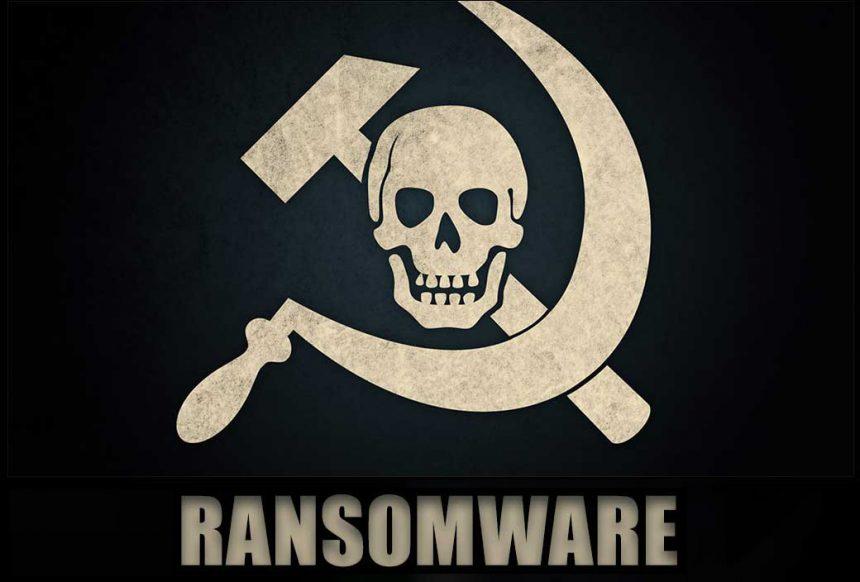Ransomware remains one of the most concerning cyber threats today, with new variants emerging regularly. Among the latest, Deoxyz ransomware has been discovered by security researchers and is based on the notorious Chaos ransomware. Like most ransomware attacks, Deoxyz encrypts files on the victim’s computer and demands a ransom in exchange for the decryption key. This article explores the Deoxyz ransomware in-depth, how it spreads, and provides a guide for removing it using SpyHunter. Additionally, we will discuss preventive measures that can help protect against future infections.
Remove annoying malware threats like this one in seconds!
Scan Your Computer for Free with SpyHunter
Download SpyHunter now, and scan your computer for this and other cybersecurity threats for free!
What Is Deoxyz Ransomware?
Deoxyz is a type of ransomware, a category of malicious software (malware) that encrypts files on a victim’s system, rendering them inaccessible without a decryption key. The attackers behind Deoxyz demand a ransom, typically paid in cryptocurrency such as Bitcoin, in exchange for the decryption key. Deoxyz is based on the Chaos ransomware and operates similarly, using advanced encryption techniques to lock files and force victims into a difficult position.
Upon infecting a computer, Deoxyz encrypts files and appends a four-character random extension to the file names. For instance, a file initially named “1.jpg” might be renamed as “1.jpg.0ae1.” This makes it impossible to open or view the files without decrypting them. Once the encryption process is complete, the ransomware changes the system’s desktop wallpaper and leaves behind a ransom note, typically titled “read_it.txt.”
Ransomware Behavior
Encryption of Files
Deoxyz ransomware encrypts a wide range of files, including documents, photos, databases, and other important data. The encryption process is fast and highly effective, preventing access to essential files needed for personal and business activities.
The encrypted files have their extensions altered, typically with a string of random characters, making it easier for the attackers to identify which files are locked.
Ransom Note
Once the encryption is complete, Deoxyz displays a ransom note on the victim’s computer, often replacing the desktop wallpaper with a message demanding payment. The note provides instructions on how to contact the attackers, usually through an email address. In this case, the attackers use the email address hot90923@gmail.com to communicate with victims.
The message reassures the victim that they can recover their files, but only if they pay the ransom. However, there is no guarantee that the attackers will provide the decryption key once payment is made, making paying the ransom a risky and potentially futile endeavor.
Text presented in the ransom message (“read_it.txt“):
Don’t worry, you can return all your files!
All your files like documents, photos, databases and other important are encrypted
Tất cả các file của bạn đều đã bị mã hóa! Tôi có thể khôi phục lại các file cho bạn
My email:hot90923@gmail.com
Peace!
Hacked by Deoxyz
No Free Decryption Tools
One of the most concerning aspects of Deoxyz ransomware is the absence of a free decryptor. This means that victims cannot restore their files without the help of the cybercriminals, making the ransomware particularly dangerous. The only way to recover files is either through a backup or by negotiating with the attackers, which, as mentioned earlier, is fraught with risk.
How Does Deoxyz Ransomware Spread?
Like most ransomware, Deoxyz spreads through various methods. The primary distribution vectors include:
- Phishing Emails: Cybercriminals often use phishing emails to distribute ransomware. These emails may contain malicious attachments or links that, when opened, download the ransomware onto the victim’s system.
- Malicious Ads (Malvertising): Deoxyz can also be distributed through deceptive ads that trick users into downloading infected software.
- Torrent Websites and Unofficial Download Channels: Downloading files from untrustworthy sources such as torrent websites or unofficial file-hosting sites increases the risk of encountering ransomware.
- Fake Software Activation Tools (Cracks): Attackers may bundle ransomware with cracks or illegal activation tools for pirated software, tricking users into executing them.
- USB Drives and Removable Storage: Some versions of ransomware can spread through local networks or via removable storage devices like USB flash drives, infecting every computer that connects to them.
Symptoms of Deoxyz Infection
Victims of Deoxyz ransomware will notice several symptoms:
- Files Are Unreadable: Files that were previously accessible are now locked, with their extensions altered.
- Ransomware Warning Message: A “read_it.txt” file will be created on the system, containing the ransom demand.
- Changes to Desktop Wallpaper: The desktop wallpaper may be changed to display the ransom note, making it clear that the system has been compromised.
- Inability to Access Files: Files cannot be opened or viewed without decrypting them, which is usually impossible without paying the ransom.
How to Remove Deoxyz Ransomware
Remove annoying malware threats like this one in seconds!
Scan Your Computer for Free with SpyHunter
Download SpyHunter now, and scan your computer for this and other cybersecurity threats for free!
If your system has been infected with Deoxyz ransomware, it is crucial to take immediate action. Follow these steps to remove the ransomware and minimize the damage:
Step 1: Disconnect from the Internet
Disconnect your device from the internet to prevent further communication with the attackers and to stop the ransomware from spreading to other devices.
Step 2: Enter Safe Mode
Restart your computer in Safe Mode to limit the ransomware’s ability to run and make it easier to remove.
- Press and hold the Shift key while clicking on the Restart option.
- Choose “Troubleshoot,” then “Advanced Options,” and “Startup Settings.”
- Restart your system and choose the “Safe Mode with Networking” option.
Step 3: Use SpyHunter to Scan and Remove Deoxyz
SpyHunter is an effective tool for detecting and removing ransomware. Follow these steps:
- Download SpyHunter: If you don’t have SpyHunter installed, download it from a clean device and transfer it via USB to the infected machine.
- Install SpyHunter: Run the installation file and follow the prompts to install SpyHunter.
- Scan Your System: Open SpyHunter and run a full system scan to detect Deoxyz ransomware and any other threats.
- Remove Threats: Once the scan is complete, follow the prompts to remove any threats identified by SpyHunter.
Step 4: Restore Your Files
If you have backups of your files stored securely, you can now restore them. Be sure to only restore files from a backup that was made before the infection to avoid reinfecting your system.
Preventing Future Deoxyz Infections
To avoid falling victim to Deoxyz or any other ransomware, follow these preventive measures:
- Back Up Your Files Regularly: Use both cloud storage and offline backups to ensure you have multiple copies of your important files.
- Use Anti-Malware Software: Always have reliable anti-malware software installed and running, such as SpyHunter, to detect and block threats before they infect your system.
- Be Cautious with Emails: Avoid opening attachments or clicking on links from unknown sources, as these are common delivery methods for ransomware.
- Update Your Software: Ensure your operating system, software, and antivirus are up-to-date to protect against security vulnerabilities.
- Educate Yourself and Your Team: Learn about social engineering tactics and phishing scams, and educate your family, friends, or colleagues about them.
Conclusion
Deoxyz ransomware is a dangerous threat that can lock your files and demand payment for their release. Although removing it with SpyHunter is an effective solution, the best way to protect yourself is through prevention—by backing up your files, using security software, and practicing safe online behavior. Remember, paying the ransom does not guarantee that you will regain access to your files, so it is essential to stay vigilant and take steps to avoid infection.
If you are still having trouble, consider contacting Virtual Technical Support.





